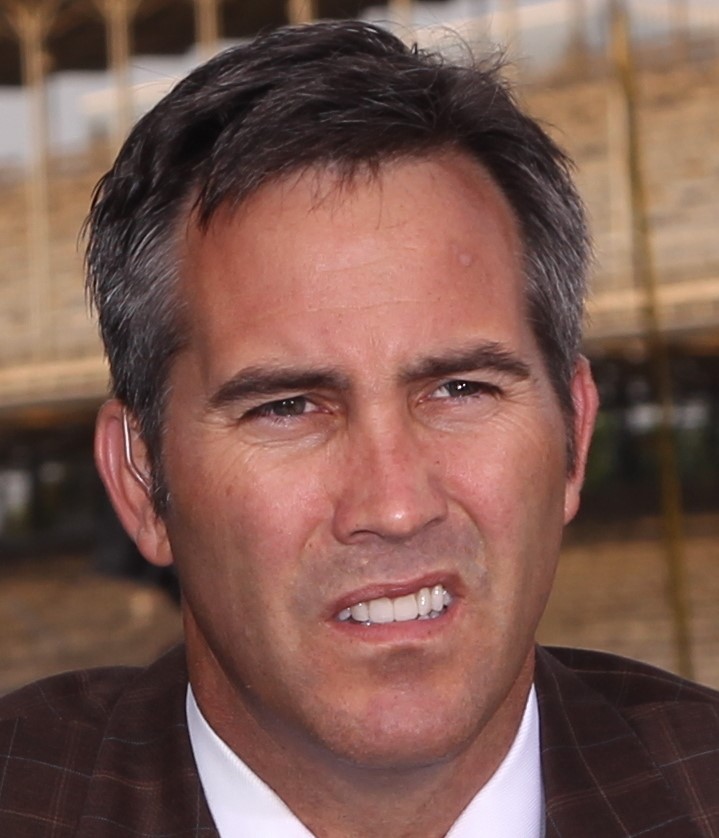SMI done paying IndyCar – rent-an-oval deals only?
 |
| Randy Bernard does not like being forced to rent oval tracks to keep them on the schedule, but NASCAR track owners ISC and SMI are forcing his hand |
Speedway Motorsports, like ISC before them, tried to run IndyCar races on their ovals but found them to be money-losers. Both SMI and ISC are publically traded companies and their shareholders are not going to stand for management signing up for events that will lose money.
However, IndyCar is also in business to make money and they have raised their sanctioning fee in recent years to force promoters to show their commitment to promote a race because they have a lot of 'skin in the game.'
Hence why you no longer see any ISC races (gone are Phoenix, Richmond, Chicagoland, Watkins Glen, Fontana, Homestead, Kansas) on the IndyCar schedule except Fontana, which is coming back in 2012 to give it one more try. And now SMI is balking telling IndyCar no more races on their oval tracks at New Hampshire, Kentucky, Charlotte, Atlanta and maybe even Texas Motor Speedway unless IndyCar is willing to rent the track and self-promote the race like they are doing in Las Vegas this weekend.
One of the IndyCar's most successful oval tracks is Texas Motor Speedway, where the annual June event draws in excess of 70,000. But TMS president Eddie Gossage said changes are needed in sanctioning fees and promotional efforts for IndyCar to grow at oval tracks.
"Look, we're all in the business of making money," Gossage said Thursday. "But [IndyCar officials] have to price things to where everyone can make some money.
"Maybe the model for what it costs to run a race team, run a sanctioning body and what a promoter can make at the gate doesn't add up. I love IndyCar racing and I'm bullish on the sport, but they have to allow the promoters to make money."
Gossage, who was part of a committee that helped select the new car design the series will go to in 2012, is still negotiating with IndyCar over a 2012 agreement.
Gossage said he is disappointed that his event will not be the race after the Indy 500 next season. IndyCar is returning to the street race at Belle Isle in Detroit next year one week after Indy.
"We have not signed a sanctioning agreement," Gossage said. "I have to believe we'll be able to reach a deal, but [the timing of the Detroit race] certainly changes the dynamic of what we're buying."
The two parent companies of the major ovals tracks, International Speedway Corp. and Speedway Motorsports Inc., have balked at times over the sanctioning fees INDYCAR wants to stage a race.
But one answer could be what the series is doing this weekend at LVMS by renting the facility.
"I'm not in position yet to take chances at other places that I took in Vegas," Bernard said. "We have to understand more about how this model works at other markets."
Barnes said the rent arrangement has worked for this event.
"Vegas is Randy's town and he has a lot of friends here," Barnes said. "He's already gone out and sold enough sponsorship for the race that he doesn't need to sell one ticket to break even."
Bernard was the CEO of the Pueblo, Colo.,-based Professional Bull Riders before taking the top job at INDYCAR two years ago.
Without question, he's done a lot of things right. Bernard listens and reacts accordingly. He's a people-person who gets things done.
Barnes said he believes the economy is a bigger factor at ovals than street races.
"Our country is in a very serious economic state," Barnes said. "People have less discretionary spending. When we have a street event, we are taking the race to them. At a lot of ovals tracks, people are coming from other places, spending money on gas and hotels."
Larry Foyt, a former driver who now is the team director for his famous father's operation at A.J. Foyt Racing, said he wants the oval races to thrive.
"I'm the first one to say we can't lose the ovals," Foyt said. "They are a necessity, but they've been down and I don't have all the answers."
No one does, but Bernard said it has to start at the roots of the sport.
"I go to some dirt tracks on weekends when I'm off," Bernard said. "Those people are very enthusiastic, and I really believe that's our fan base, so we have to embrace it by having more ovals. It's all about loyalty."
But INDYCAR also has to convince the people competing and watching Sprint Cup and midget car races that its product is a better option than NASCAR, a battle the league has been losing for more than two decades.
Gossage said the road and street courses aren't doing much better than most ovals. It's a problem of perception. A crowd of 50,000 looks full at a street race. A crowd of 50,000 looks empty on an oval track with more than 100,000 seats.
"It's perception in another way, also," Barnes said. "If someone comes to an IndyCar race for the first time at a big oval and sees all the empty seats, they may think, 'Well, maybe this isn't such a big deal and I don't need to come back.'" In part from ESPN.com
